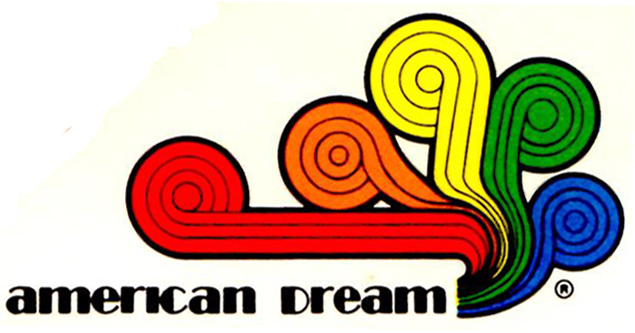How American Dream Began
It all began one day at the end of the first week of May, 1971. I had just returned to Massachusetts from the May Day protests in Washington, DC where 12,000 of us young folks were arrested, charged with mayhem, and jailed over three days for participating in civil actions which resulted in our successful shut down of the city. It was the largest number of US citizens ever arrested by the US government and despite the best efforts of 10,000 troops to keep order, the city was in chaos.
I was at a friend's apartment reading an article about a man named Paul Ropp in Rolling Stone Magazine. Paul had produced booklets of rolling papers with each leaf printed with an American flag pattern. He was doing quite well at it and it made me realize that the market for rolling papers must be substantial. I wondered if it would be practical to produce a booklet of rolling papers with a different rock group or other image printed on each leaf. The other folks in the room thought that would be an interesting idea, so I explored it. By the end of June I realized that printing a different image on each leaf would be very difficult technically, however I could easily print each booklet with a different image, much the way custom printed matchbooks were produced. I decided that this business would be harmonious with my social and political beliefs so I decided to make a go of it.
I was living on a mountain top in a cottage behind the church in Shutesbury, Massachusetts and it was there that I set up a drafting table in my bedroom to layout some sample booklet covers. I could not afford the cutting dies that would enable me to print and die-cut covers suitable for interleaved booklets, so I decided on a pouch format that held flat leaves of papers. I had contacted some local rock groups including Mountain who had expressed interest and also decided to try out some designs to use in possible sales pitches. I decided that cigarette papers sporting the Playboy Bunny might be something that might interest Playboy Magazine.
The next step was to produce the covers, however after calling a local print shop, I realized I did not understand the printing process well enough. So I offered myself to the printer as free labor so I could learn about printing. After six weeks of working in all the various departments of the shop and having secured some rolling papers, I was ready to move ahead. I did all the artwork, camera work, layout, stripping, registering, and color separations, necessary to print my first run of rolling paper covers. In those days, I was getting the paper in long bundles of flat papers, cutting them to length, then inserting them into the pouch booklets. By the end of August, I was ready to show off the first runs of rolling papers to potential customers. I also sent off a good supply of booklets to numerous departments at Playboy Magazine and waited with great anticipation for the return phone calls which I assumed would result in a wonderful order from Playboy.
Shortly after I sent the booklets, I received an envelope with the Playboy logo and excitedly ripped it open in anticipation of my first large order. Unfortunately it was not a purchase order, it was from the legal department. Playboy’s corporate counsel wrote in very unambiguous language that numerous individuals within the company had been in receipt of a significant number of Playboy rolling papers and that unless I immediately agreed not to use the Playboy logo on rolling papers I could expect a lawsuit. I wanted to ensure this wasn’t a mistake on Playboy’s part so I called the attorney personally, took a bit of abuse, then as he softened his tone, learned that the booklets had made quite a hit with some Playboy employees, but not in the legal department. He assured me in no uncertain terms that Playboy was not going to be an American Dream customer, extracted one more promise from me that I would stop production, then went on his way.
Fortunately, the remaining 15 or so designs I produced in that first run produced quite the opposite reaction, resulted in some orders, and American Dream was up and running amid some controversy. That would foreshadow the future of American Dream which produced much joy, happiness, and interest from many customers as well as a healthy level of controversy. As a young, revolutionary, college grad of the 60’s it was just what I was looking for.
Michael Garjian
